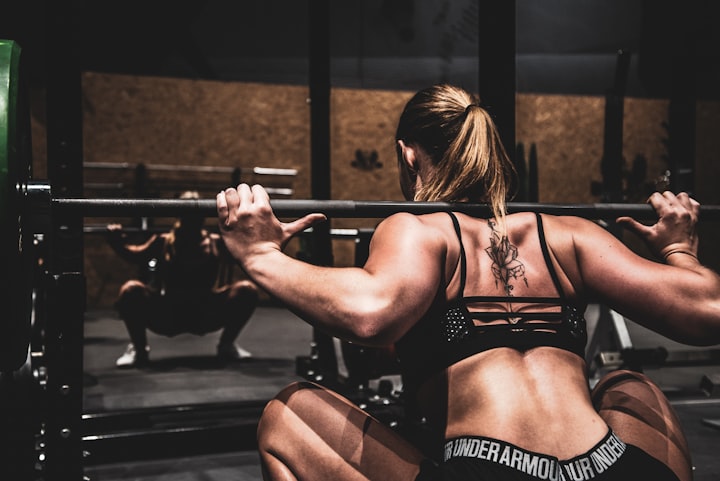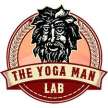6 Effective Exercises To Treat And Prevent Piles: A Complete Guide
TheYogaManLab

Dealing with Piles can be a discomforting experience that affects many adults at some point in their lives. However, there's good news! You can take control of this condition and find relief through simple exercises that target the rectal tissues, abdominal muscles, and sphincter muscles. In this comprehensive guide, we will explore six effective exercises to treat and prevent Piles. Additionally, we will discuss other remedies and lifestyle tips that can help manage and alleviate the symptoms of Piles.
Exercises to Treat and Prevent Piles:
Pelvic Floor Contraction:
One of the key exercises for treating Piles is strengthening the pelvic floor muscles. By doing this exercise, you can facilitate smoother bowel movements, relax the anal sphincter, and reduce the risk of straining.
Lie on your back or sit comfortably.
Contract your anal muscles, as if you are preventing the passage of gas.
Hold this contraction for 5 seconds.
Relax for 10 seconds.
Repeat this process 5 times.
Then, repeat the exercise using only half your strength.
Squeeze and relax the muscles as quickly as possible.
Continue this sequence 2 to 4 times throughout the day.
Deep Breathing:
Deep breathing exercises help relieve tension in the pelvic floor muscles and promote relaxation.
Sit up straight and place your hands above your waist on either side of your lower rib cage.
Take a deep breath, allowing your abdomen to expand.
Exhale and draw your navel toward your spine.
Repeat this process for up to 5 minutes.
Child's Pose (Balasana):
The Child's Pose is beneficial for increasing circulation around the anus, relieving constipation, and relaxing the lower back, hips, and legs. This pose also provides a gentle massage to your internal organs.
Start on your hands and knees.
Sit back, placing your hips on your heels.
Extend your arms in front of you or relax them alongside your body.
Stay in this position for up to 5 minutes.
Legs Up-the-Wall Pose (Viparita Karani):
The Legs Up-the-Wall Pose improves circulation to the anus while alleviating discomfort and irritation.
Sit with your right side next to a wall.
Place your legs up on the wall and lie down on your back.
Find a comfortable position for your arms or give yourself a gentle abdominal massage.
Hold this position for up to 15 minutes.
Wind-Relieving Pose (Pawanmuktasana):
The Wind-Relieving Pose applies gentle pressure to the abdomen, improving digestive comfort. It also helps relax the muscles in the abdomen, buttocks, and anus.
Lie on your back.
Bend one or both knees and draw them toward your chest.
Place your hands around your shins, clasping your hands or holding opposite elbows.
Hold this position for up to 1 minute.
Bound Angle Pose (Baddha Konasana):
The Bound Angle Pose strengthens and improves flexibility in the inner thighs, groin, and knees. It also stimulates the abdominal organs and provides relief from digestive discomfort.
Sit on a cushion, block, or folded blanket.
Bring the soles of your feet together and allow your knees to fall out to the sides.
Interlace your fingers around your pinky toes while lengthening your spine.
Stay in this position for up to 1 minute.
Exercises to Avoid:
While certain exercises can help alleviate Piles symptoms, there are activities you should avoid as they may worsen the condition. These exercises include:
Sit-ups
Squats and similar movements
Weightlifting
Cycling
Horseback riding
Rowing
Engaging in these strenuous or high-impact exercises can put additional pressure on your abdominals, anal area, or Piles, leading to increased pain, irritation, or bleeding. It's important to prioritize gentle exercises that promote healing and reduce discomfort.
Other Remedies for Treating and Preventing Piles:
In addition to exercises, there are several home remedies and lifestyle tips that can assist in treating and preventing Piles. These remedies are simple and can contribute to maintaining regular bowel movements and overall digestive health. Consider incorporating the following into your routine:
Stay Active with Cardiovascular Exercise:
Engage in cardiovascular exercises such as treadmill or elliptical training, swimming, and jogging. Regular physical activity helps improve blood circulation, including in the rectal area, which can aid in the prevention and management of Piles.
Keep the Affected Area Dry and Clean:
Maintain good hygiene by keeping the affected area dry and clean. After using the toilet, gently pat the area dry or use a hairdryer on a cool setting. This practice helps prevent irritation and promotes healing.
Use Over-the-Counter (OTC) Topical Treatments:
Consider using OTC topical treatments, such as hydrocortisone or Piles cream, to alleviate symptoms like itching and inflammation. These products can provide temporary relief and promote healing.
Utilize Soothing Agents:
Apply natural soothing agents such as witch hazel, aloe vera, or a numbing ointment containing lidocaine to the affected area. These substances possess anti-inflammatory properties and can help relieve discomfort and irritation.
Take Sitz Baths:
Soak in a sitz bath for 15 to 20 minutes at a time, multiple times per day or after a bowel movement. This warm water bath can help reduce inflammation and provide relief from pain and itching.
Maintain Adequate Hydration:
Drinking plenty of water throughout the day is essential for maintaining optimal bowel function and preventing constipation, which can exacerbate Piles symptoms. Aim to drink at least 8 glasses of water daily.
High-Fiber Diet:
Consume a diet rich in high-fiber foods, including fruits, vegetables, and whole grains. Fiber adds bulk to the stool, softens it, and promotes regular bowel movements, reducing the strain on the anal area.
Consider Stool Softeners:
If you frequently experience constipation, consider taking over-the-counter stool softeners as recommended by a healthcare professional. These medications can help ease bowel movements and reduce the need to strain.
Opt for Loose-Fitting Clothing:
Wear loose-fitting clothing made of natural fibers to allow for proper airflow and minimize irritation to the anal area.
Establish a Regular Bowel Routine:
Maintain a regular bowel routine by going to the bathroom as soon as you experience the urge. Avoid delaying bowel movements as it can lead to constipation and increased pressure on the hemorrhoidal veins.
Manage Stress:
Stress can affect your digestive health. Explore stress management techniques such as meditation, deep breathing exercises, or engaging in activities you enjoy to help reduce stress and promote a healthy digestive system.
When to Seek Medical Help:
While most cases of Piles can be effectively managed with lifestyle modifications and home remedies, there are instances where medical intervention is necessary. It's important to seek medical help if:
Piles do not improve after a week of self-treatment.
You experience persistent or severe rectal bleeding or bloody stools.
Your bowel habits change, including the color and consistency of stools, accompanied by rectal bleeding.
You develop a Piles that is extremely painful or rapidly enlarging. This could be a sign of a blood clot within the Piles, requiring prompt medical attention.
Additionally, seek immediate medical care if you experience:
Severe or prolonged rectal bleeding
Feel light-headed, dizzy, or faint
Anal pain that worsens, spreads, or is accompanied by fever, chills, or anal discharge
These symptoms may indicate more serious underlying conditions, such as colorectal or anal cancer, and require evaluation by a healthcare professional.
Takeaway:
Piles can be a challenging condition to manage, but with the right exercises, remedies, and lifestyle adjustments, you can find relief and prevent future flare-ups. Incorporating pelvic floor contractions, deep breathing, and yoga poses like Child's Pose, Legs Up-the-Wall Pose, Wind-Relieving Pose, and Bound Angle Pose can effectively alleviate symptoms and promote healing.
However, it is crucial to avoid strenuous exercises that put pressure on the affected area. Additionally, adopting healthy habits such as regular exercise, good hygiene practices, proper hydration, and a high-fiber diet can contribute to the prevention and management of Piles.
Remember to listen to your body and consult a healthcare professional if your symptoms persist or worsen. They can provide a comprehensive evaluation and guide you toward the most suitable treatment plan for your individual needs. By taking proactive steps and seeking appropriate care, you can regain control over your digestive health and live comfortably.
Buy Now
Read More From TheYogaManLab
About the Creator
TheYogaManLab
At The Yoga Man Lab, we believe in providing the best quality supplements & medicines that are made in India, 100% natural, ethically sourced






Comments
There are no comments for this story
Be the first to respond and start the conversation.